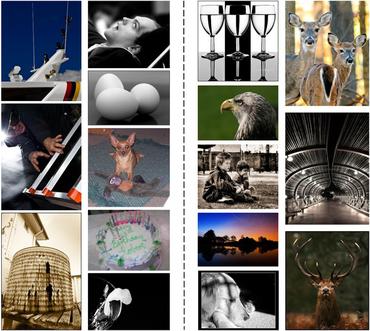Image Quality Assessment
224 papers with code • 3 benchmarks • 12 datasets
Libraries
Use these libraries to find Image Quality Assessment models and implementationsDatasets
Subtasks
Most implemented papers
Conditional Image Synthesis With Auxiliary Classifier GANs
We expand on previous work for image quality assessment to provide two new analyses for assessing the discriminability and diversity of samples from class-conditional image synthesis models.
The Unreasonable Effectiveness of Deep Features as a Perceptual Metric
We systematically evaluate deep features across different architectures and tasks and compare them with classic metrics.
NIMA: Neural Image Assessment
Automatically learned quality assessment for images has recently become a hot topic due to its usefulness in a wide variety of applications such as evaluating image capture pipelines, storage techniques and sharing media.
Evaluation of Retinal Image Quality Assessment Networks in Different Color-spaces
Retinal image quality assessment (RIQA) is essential for controlling the quality of retinal imaging and guaranteeing the reliability of diagnoses by ophthalmologists or automated analysis systems.
Learning to Resize Images for Computer Vision Tasks
Moreover, we show that the proposed resizer can also be useful for fine-tuning the classification baselines for other vision tasks.
Image Quality Assessment Guided Deep Neural Networks Training
For many computer vision problems, the deep neural networks are trained and validated based on the assumption that the input images are pristine (i. e., artifact-free).
Generative Adversarial Networks in Computer Vision: A Survey and Taxonomy
While several reviews for GANs have been presented to date, none have considered the status of this field based on their progress towards addressing practical challenges relevant to computer vision.
SER-FIQ: Unsupervised Estimation of Face Image Quality Based on Stochastic Embedding Robustness
Face image quality is an important factor to enable high performance face recognition systems.
Contrastive Explanations in Neural Networks
Current modes of visual explanations answer questions of the form $`Why \text{ } P?'$.
Region-Adaptive Deformable Network for Image Quality Assessment
Image quality assessment (IQA) aims to assess the perceptual quality of images.



 CSIQ
CSIQ
 KonIQ-10k
KonIQ-10k
 MSU NR VQA Database
MSU NR VQA Database
 MSU FR VQA Database
MSU FR VQA Database
 TID2013
TID2013
 PIQ23
PIQ23
 Hephaestus
Hephaestus



